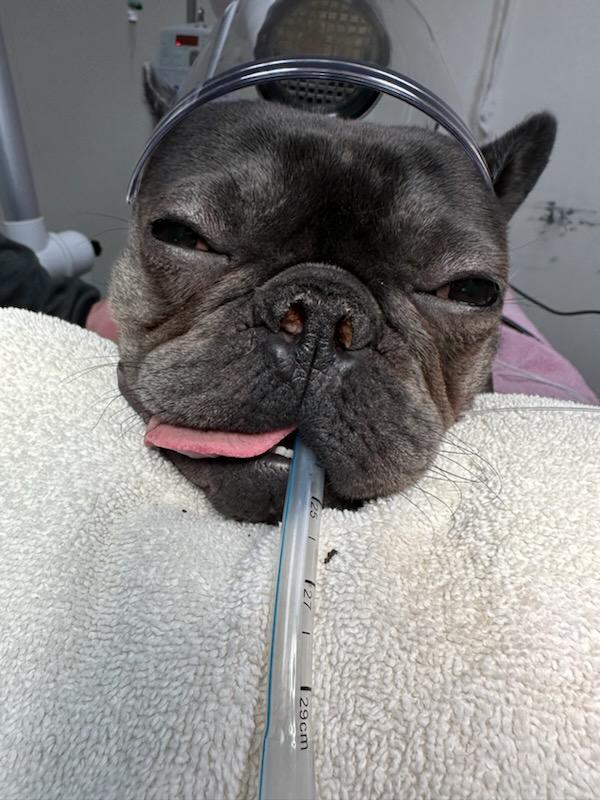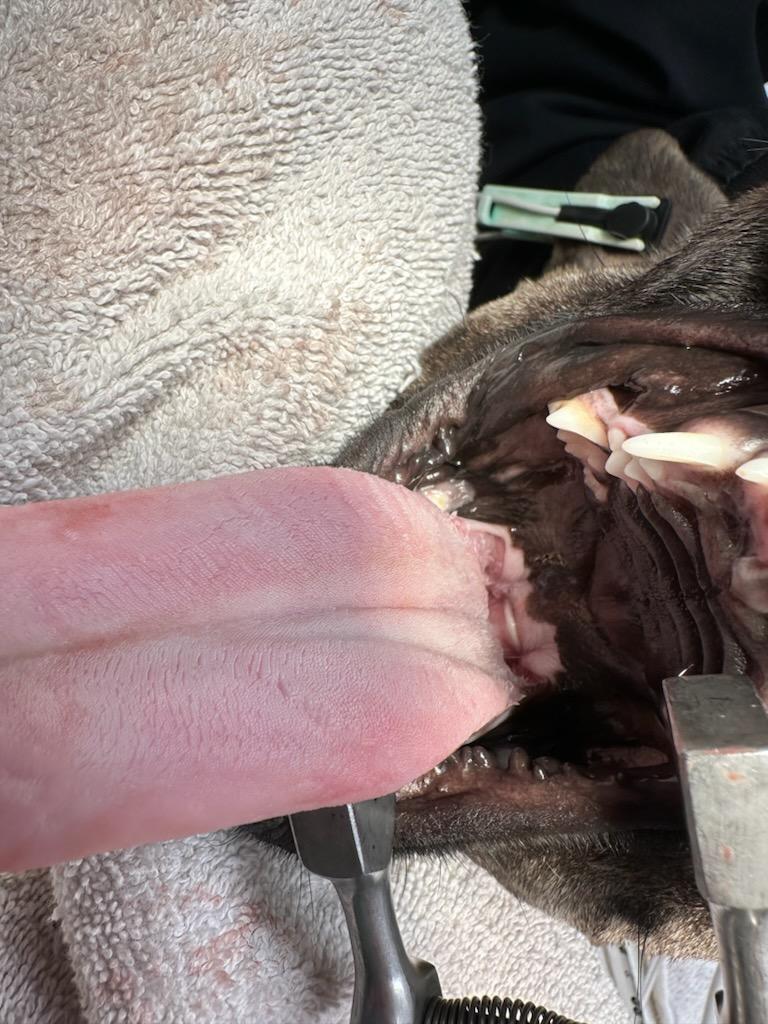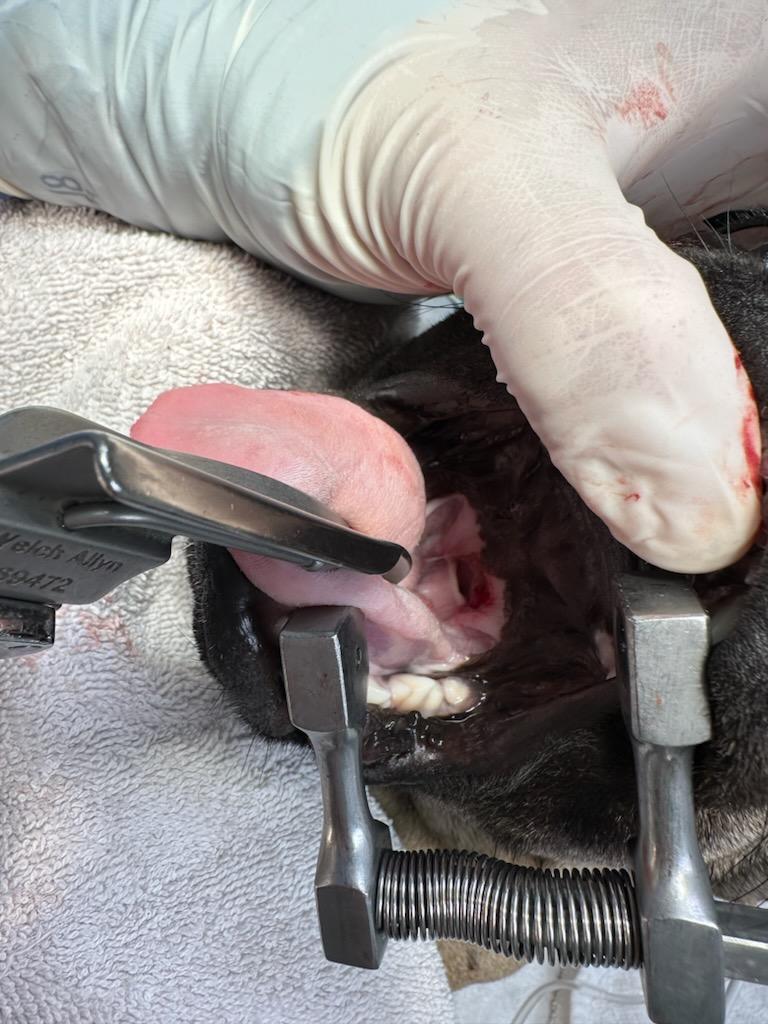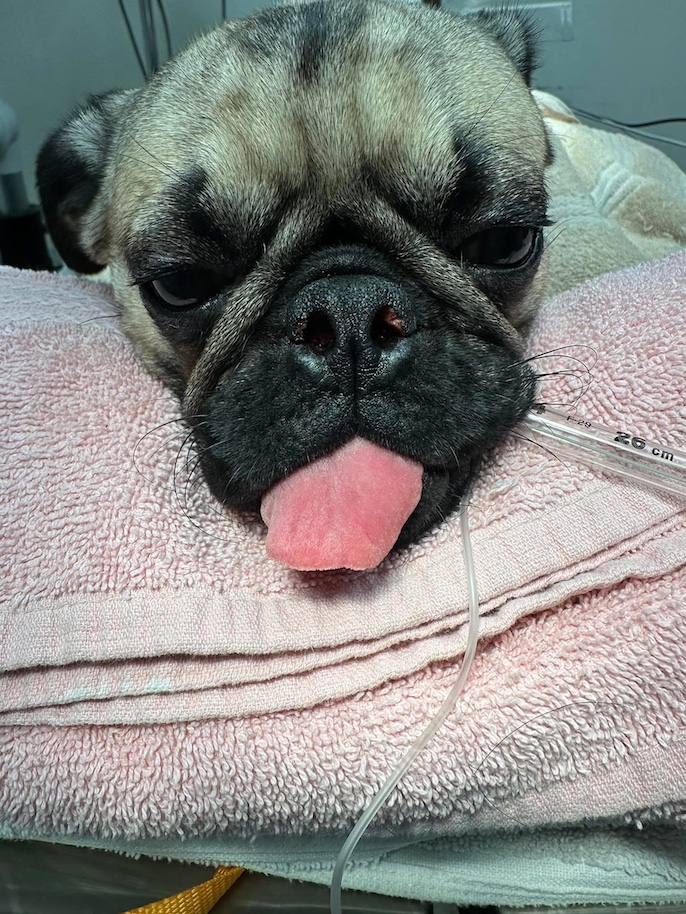

Helping Your Pet Breathe Easier
Brachycephalic Obstructive Airway Syndrome (BOAS) is a condition that affects certain breeds with short muzzles, causing difficulty breathing due to structural abnormalities in their airways. At Radford Animal Hospital, we can perform corrective surgery to improve airflow and help your pet live a happier, healthier life.
What is a Brachycephalic Dog?
“Brachycephalic” refers to dogs with shortened muzzles, giving them their characteristic “pushed-in” face. While adorable, these features can lead to airway obstruction and breathing challenges.
Common Breeds Affected by BOAS:
- English Bulldogs
- Pugs
- French Bulldogs
- Boston Terriers
- Boxers
- Pekingese
- Shih Tzus
- Chinese Shar-Peis
- Lhasa Apsos
- Bullmastiffs
Signs Your Dog May Have BOAS:
- Noisy breathing (snoring, wheezing, snorting)
- Difficulty exercising or intolerance to activity
- Gagging when eating or drinking
- Heavy or labored breathing
- Open-mouth breathing
- Blue-tinged gums (due to lack of oxygen)
- Fainting or collapse
Why Does BOAS Occur?
Several airway abnormalities can contribute to BOAS, including:
- Narrow nostrils (stenotic nares): Small or collapsing nostrils make breathing harder.
- Elongated soft palate: Excess tissue at the back of the throat blocks airflow.
- Everted laryngeal saccules: Tissue near the vocal cords obstructs airflow.
- Narrow windpipe (hypoplastic trachea): Some dogs have a proportionally small trachea, limiting air intake.
Over time, these issues can worsen as the dog strains to breathe, leading to swelling, inflammation, and increased obstruction.
How is BOAS Diagnosed?
Diagnosis typically occurs between 1 and 4 years of age and includes:
- Physical examination (to assess nostrils and breathing patterns)
- Mild sedation (to evaluate the soft palate and laryngeal saccules)
- X-rays (to assess the trachea and chest)
- Advanced imaging (such as endoscopy or CT scan for a detailed airway view)
Treatment Options for BOAS
Mild Cases:
- Maintain a healthy weight
- Avoid excessive heat and humidity
- Minimize stress and overexertion
- Use a harness instead of a collar to reduce pressure on the airway
Surgical Intervention for Severe Cases:
Surgery provides the best long-term solution for dogs struggling with BOAS. At Radford Animal Hospital, we offer procedures including:
- Nostril widening (to improve airflow)
- Soft palate shortening (to reduce obstruction)
- Removal of everted saccules (to clear the airway)
While surgery carries risks such as swelling or bleeding, early intervention—especially in dogs under 2 years old—leads to better outcomes.





Emergency Situations
If your dog experiences severe breathing difficulty, collapse, or distress, immediate veterinary attention is critical. Emergency treatments may include:
- Oxygen therapy
- Sedation (to reduce stress and effort)
- Anti-inflammatory medications
- Temporary tracheostomy (if the airway is severely blocked)
Long-Term Outlook
- Dogs with mild cases can live normal, healthy lives.
- Early surgical intervention greatly improves breathing and quality of life.
- Severe cases, especially those with laryngeal collapse, have a more guarded prognosis.
Preventing BOAS in Future Generations
Since BOAS is a genetic condition, affected dogs—especially those requiring surgery—should not be bred. Responsible breeding practices help reduce the risk of future puppies inheriting these serious breathing issues.
We’re Here to Help!
If your dog is showing signs of BOAS, our experienced veterinary team at Radford Animal Hospital can provide a thorough evaluation and discuss the best treatment options. Contact us today to schedule a consultation!
